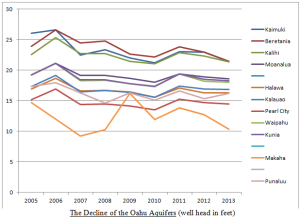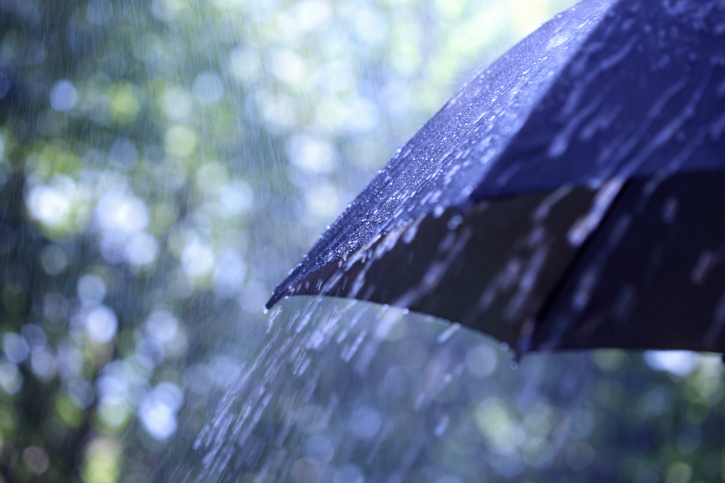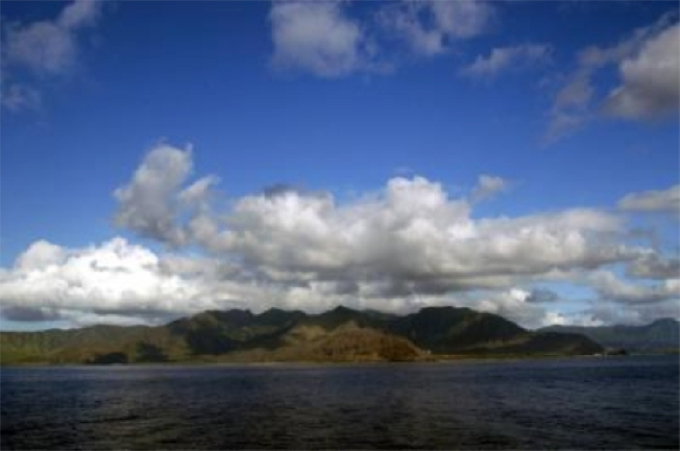Hawai‘i has been blessed with consistent rainfall, advantageous geology, and high-quality drinking water stores for centuries. Recent findings, however, have raised concern about long-term fresh water security for our Islands. University of Hawai‘i and other scientists have documented troubling trends including reduced rainfall, higher evaporation rates, and declining stream flows in recent decades. These findings, coupled with the demand of an ever-increasing population, suggest that Hawai‘i is entering an era of fresh water uncertainty.
The Hawai‘i Fresh Water Initiative (Initiative) was launched in 2013 to bring multiple, diverse parties together to develop a forward-thinking and consensus-based strategy to increase water security for the Hawaiian Islands. Organized by the independent, nonprofit Hawai‘i Community Foundation (HCF), the Initiative relied on a blue ribbon advisory panel of individuals (Hawai‘i Fresh Water Council or Council) with deep knowledge of water and a collaborative spirit to articulate a vision for a more secure and sustainable water future based on shared values, and shared sacrifice. This Blueprint is the result of their work, and provides Hawai‘i policy and decision-makers with a set of solutions that have broad, multi-sector support in the fresh water community that should be adopted over the next three years to put Hawai‘i on a path toward water security. The Blueprint also builds on the good work, findings, and recommendations over the years by preceding stewards of Hawai‘i’s most important resource.
To achieve the ambitious goal of 100 mgd in additional fresh water capacity, the group outlined three aggressive water strategy areas and individual targets that the public and private sectors must work together to achieve by 2030:
- Conservation: Improve the efficiency of our population’s total daily fresh groundwater water use rate by 8% from the current 330 gallons per day/person to 305 gallons per day/person.1 By 2030, this goal will provide 40 mgd in increased water availability.
- Recharge: Increase Hawai‘i’s ability to capture rainwater in key aquifer areas by improving storm water capture and nearly doubling the size of our actively protected watershed areas.2 By 2030, this goal will provide 30 mgd in increased water availability.
- Reuse: More than double the amount of wastewater currently being reused in the Islands to 50 mgd.3 By 2030, this goal will provide an additional 30 mgd in increased water availability.
The Fresh Water Council distilled nearly two years of research and analysis into a single goal: creating 100 million gallons per day (mgd) in additional, reliable fresh water capacity for our islands by 2030.
Read the HFC’s Blueprint for Action here…



 Chase Norton, a Meteorology Research Assistant at the School of Ocean and Earth Science and Technology (SOEST) at UH — Manoa, and colleagues (Professors Pao-Shin Chu and Thomas Schroeder) used a statistical model; rainfall data from rainfall gauges on Oahu, Hawaii; and a suite of General Circulation Models (GCMs) from the Intergovernmental Panel on Climate Change (IPCC) to project future patterns of heavy rainfall events on Oahu. GCMs play a pivotal role in the understanding of climate change and associated local changes in weather.
Chase Norton, a Meteorology Research Assistant at the School of Ocean and Earth Science and Technology (SOEST) at UH — Manoa, and colleagues (Professors Pao-Shin Chu and Thomas Schroeder) used a statistical model; rainfall data from rainfall gauges on Oahu, Hawaii; and a suite of General Circulation Models (GCMs) from the Intergovernmental Panel on Climate Change (IPCC) to project future patterns of heavy rainfall events on Oahu. GCMs play a pivotal role in the understanding of climate change and associated local changes in weather.